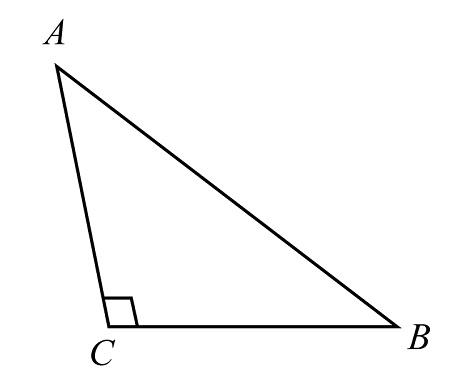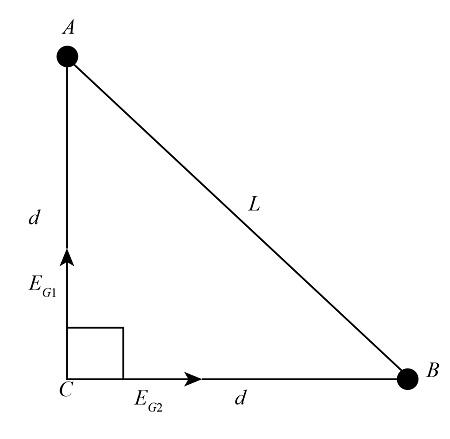Question
Question: Two small particles of mass m each are placed at the vertices A and B of a right angle isosceles tri...
Two small particles of mass m each are placed at the vertices A and B of a right angle isosceles triangle. If AB=l, find the gravitational field strength at C.

Solution
First, draw the diagram of the triangle with all the information. After this, use the Pythagoras to determine the distance of point C form points A and B. Then, we will use the expression of the gravitational field strength to determine its magnitude at C.
Complete step by step answer:
Draw the diagram of the triangle.

We know that C is equidistant from the points A and B. so we will use the Pythagoras theorem for the calculation of the distance of point C from point A and B.
Therefore, we get
{d^2} + {d^2} = {L^2}\\\
⟹2d2=L2
⟹d=2L …… (1)
Here, d is the distance of the point C from A and B, and L is the distance between A and B.
Write the expression of the gravitational field strength at point C due to the particle present at point A, so
EG1=d2Gm
Here, m is the mass of the particle at A, G is the gravitational constant and d is the distance of point C form the A.
From equation (1), substitute the value of d in the above equation, so the above equation becomes
{E_{G1}} = \dfrac{{Gm}}{{{{\left( {\dfrac{L}{{\sqrt 2 }}} \right)}^2}}}\\\
⟹EG1=L22Gm …… (2)
Similarly, write the expression of the magnetic field strength at C due to particle present at B, so
EG2=d2Gm
Here, m is the mass of the particle at B, G is the gravitational constant and d is the distance of point C form the B.
From equation (1), substitute the value of d in the above equation, so the above equation becomes
{E_{G2}} = \dfrac{{Gm}}{{{{\left( {\dfrac{L}{{\sqrt 2 }}} \right)}^2}}}\\\
⟹EG2=L22Gm …… (3)
From the diagram, we know that the angle between EG1 and EG2 is 90 degrees, so the resultant of the EG1 and EG2 becomes,
E=(EG1)2+(EG1)2
Substitute the values form equation (2) and (3) in the above equation.
Therefore, we get
E = \sqrt {{{\left( {\dfrac{{2Gm}}{{{L^2}}}} \right)}^2} + {{\left( {\dfrac{{2Gm}}{{{L^2}}}} \right)}^2}} \\\
⟹E=2(L22Gm)2
⟹E=2(L22Gm)
⟹2(L22Gm)
Therefore, the gravitational field strength at C is 2(L22Gm).
Note:
Always draw the diagram of the given condition with the representation of distances between various points, direction of the gravitational field and other things for a better understanding of the solution. Also, remember the expression of the gravitational field strength.
